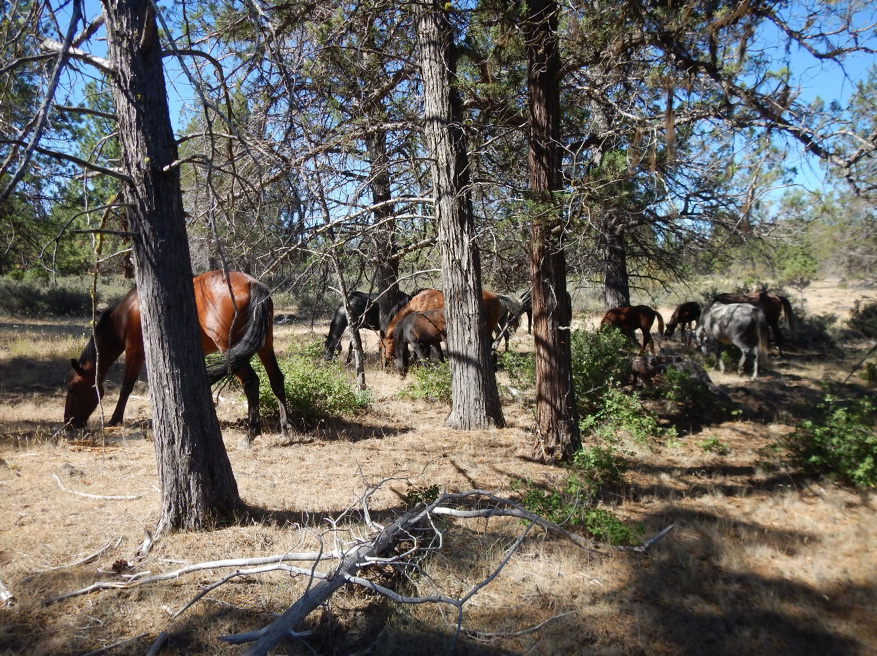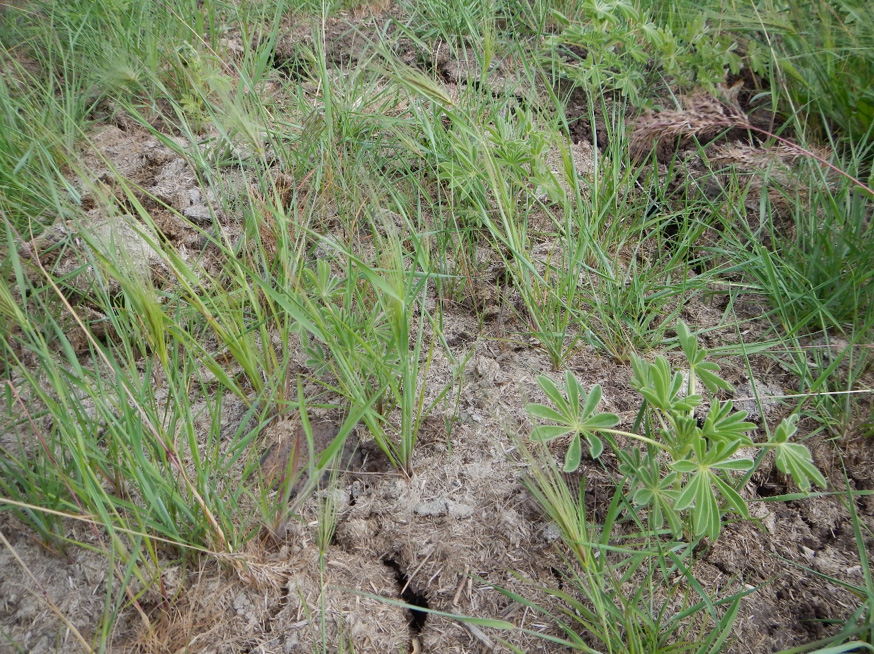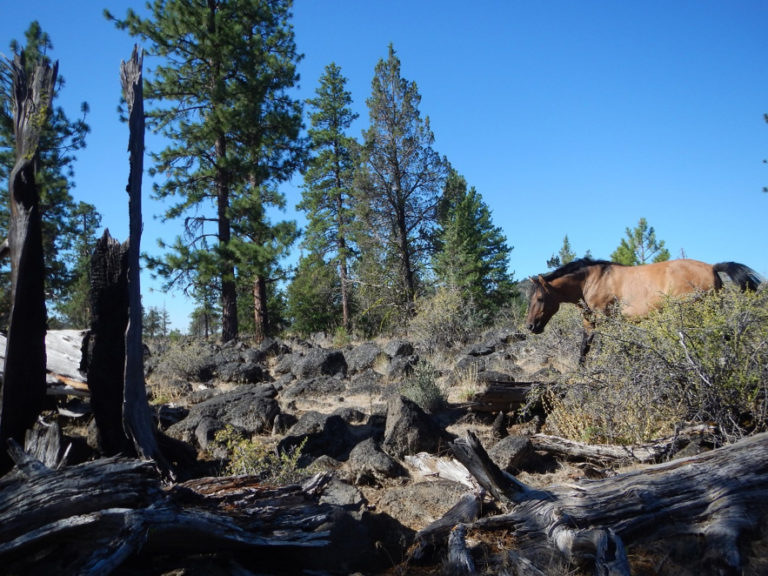Wild Horse Fire Brigade: Lessons in Rebalancing North American Ecosystems by Rewilding Equids

In North America, plants and animals including horses coevolved over many millions of years. But, around 10,000 BC, horses disappeared from their original home likely because of early Native American hunting.
Meanwhile, horses had crossed out of America over the Bering Strait’s land bridge. In this way, America’s native horses and their descendants avoided extinction and eventually populated Europe, Asia and Africa. Some horses, such as zebra, remained wild. Others were domesticated. The Spanish brought horses home to North America about 1500 where they immediately flourished in the habitats where they had evolved.
Those who believe that horses are “alien exotic” animals that don’t “belong” in our systems because they are “invasive species” that by definition “harm” native plants and animals and thereby cause “ecosystem damage” don’t understand the natural history of the horse and its native continent, or the physical interdependence that exists between American rangelands and forests and the creatures that evolved along with them.
A small part of that mutual need is discussed in the excellent article below.
NOTE: this article was originally published to Grazelife.com on November 1, 2019.
One of the main topics of the GRAZELIFE-project is prevention of wildfire damage by large herbivores. While we are examining this issue in the European context, we can already take advantage of experiences in other parts of the world. Below the case of wild horses as a natural fire brigade in the US.
Recently an intensive close-range five-year observational study has revealed new insights into wild horse behavioral ecology in the wilderness, and how their symbiosis with other native species flora and fauna can benefit western American wilderness areas.

Wildfire prevention
This study titled “Impact Of Wild Horses On Wilderness Landscape And Wildfire – Preliminary Findings” by naturalist-rancher William E. Simpson II unveils a factual understanding of wild horses and their natural, positive impact on wilderness and forest landscapes.

Reseeding function
Unlike ruminants (deer, elk, cattle, sheep), which chew a cud and have complex and highly efficient digestive systems, wild horses and burros are single stomached and therefore do not digest most of the seeds they eat. This makes wild horses and burros nature’s re-seeding experts in and around wilderness landscapes, where they perform the role of reseeding and supporting the reestablishment of threatened and endangered plants and grasses.

This evolutionary process also helps to restore soils that have been depredated by wildfires. Furthermore, wildfire grazing by wild horses can annually sequester millions of tons of carbon compounds back into soils, as opposed to allowing wildfires and prescribed burns to combust vegetative materials producing greenhouse gases and toxic wildfire smoke.
Wild horse droppings provide humus for native plant and grass seeds that pass through a horse’s single stomach undigested.
Wild horses impact
The Study is the first of its kind and is unique in that is was conducted in a wilderness area that is virtually devoid of livestock operations, and therefore any impact on the landscape can only be attributed to wild horses. In other areas where comingled cattle and wild horses are in competition, determining damage or benefit to the landscape becomes a very difficult “who done it” mystery, which is vulnerable to partisan interpretation.

More to read and watch
The results are supported by firefighters and scientists, and produced thousands of photos and many videos derived from eleven thousand hours of observational study in remote locations under difficult conditions at close range. Some of the findings are further elaborated on in two articles:
- New paradigm in the observational study of native species in wilde horses
- After fires, unsung heroine of wild horses in life-threatening battle
A recent natural history documentary film out of Colorado College titled “Fuel, Fire and Wild Horses” – based on the findings of the study above – has been “Officially Selected” by the Aspen Mountain Film Festival and highlights the mutualisms that wild horses have in and around forest ecosystems.
Management plan
As a result of information gained from the Study, along with other published supporting science by scientists, a new management plan for wild horses has been published and offers a winning solution for all stakeholders. The plan is titled, “Natural Wildfire Abatement And Forest Protection Plan”, also affectionately known as the “Wild Horse Fire Brigade” by some people.
The beneficiaries of the Plan include livestock enterprises, the timber industry, wilderness ecosystems and America’s native species wild horses and burros, all the while providing a reduction in both the frequency and intensity of catastrophic wildfire.
More information:
- PDF of the study
- Natural Wildfire Abatement And Forest Protection Plan website
- Documentary film ‘Fuel, Fire and Wild Horses’
- FOCUS TODAY TV interview with naturalist-rancher William E. Simpson II
- NBC News interview (3-min.) with naturalist-rancher William E. Simpson II
